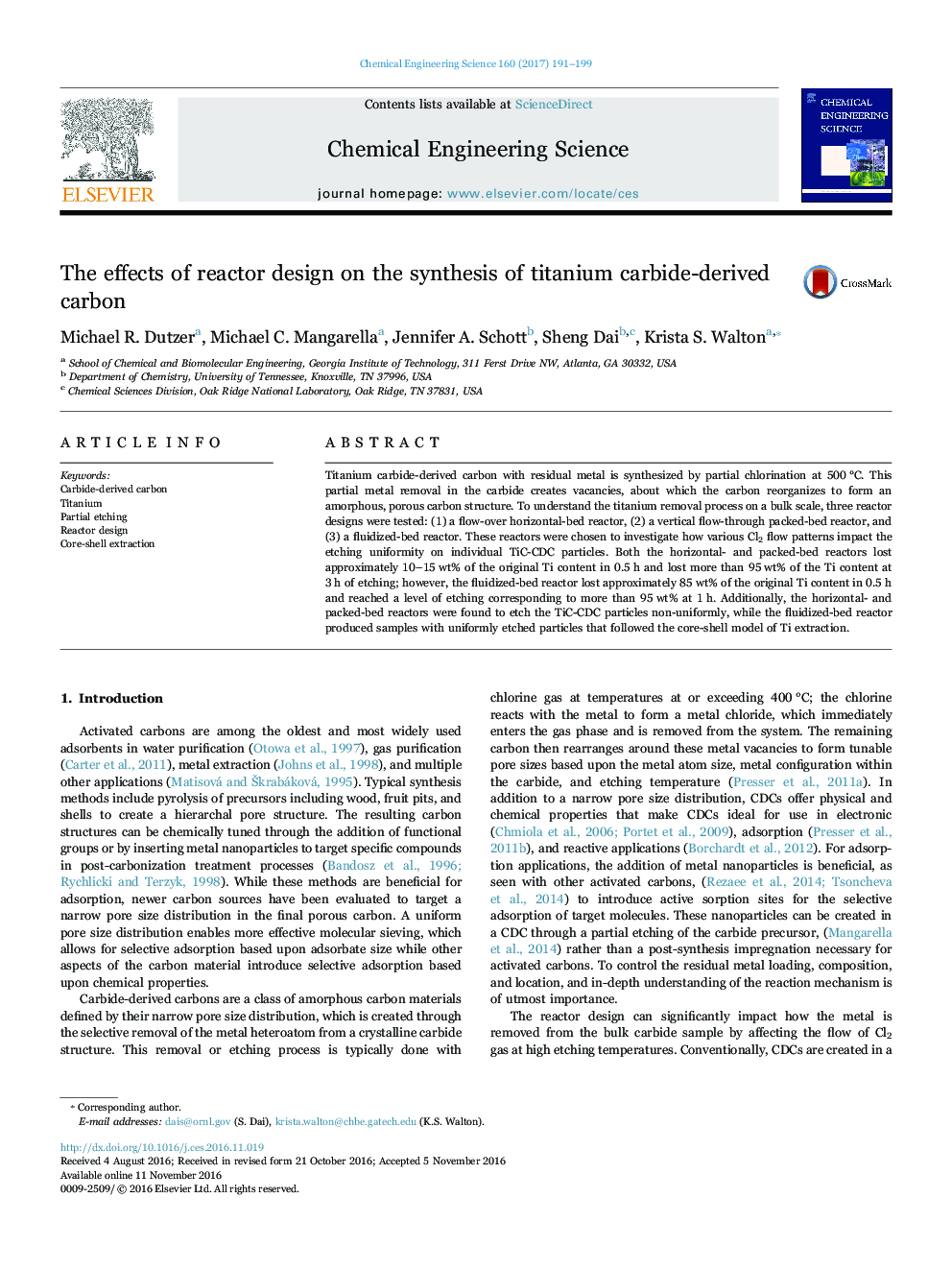| Article ID | Journal | Published Year | Pages | File Type |
|---|---|---|---|---|
| 6467689 | Chemical Engineering Science | 2017 | 9 Pages |
Abstract
Titanium carbide-derived carbon with residual metal is synthesized by partial chlorination at 500 °C. This partial metal removal in the carbide creates vacancies, about which the carbon reorganizes to form an amorphous, porous carbon structure. To understand the titanium removal process on a bulk scale, three reactor designs were tested: (1) a flow-over horizontal-bed reactor, (2) a vertical flow-through packed-bed reactor, and (3) a fluidized-bed reactor. These reactors were chosen to investigate how various Cl2 flow patterns impact the etching uniformity on individual TiC-CDC particles. Both the horizontal- and packed-bed reactors lost approximately 10-15 wt% of the original Ti content in 0.5 h and lost more than 95 wt% of the Ti content at 3 h of etching; however, the fluidized-bed reactor lost approximately 85 wt% of the original Ti content in 0.5 h and reached a level of etching corresponding to more than 95 wt% at 1 h. Additionally, the horizontal- and packed-bed reactors were found to etch the TiC-CDC particles non-uniformly, while the fluidized-bed reactor produced samples with uniformly etched particles that followed the core-shell model of Ti extraction.
Related Topics
Physical Sciences and Engineering
Chemical Engineering
Chemical Engineering (General)
Authors
Michael R. Dutzer, Michael C. Mangarella, Jennifer A. Schott, Sheng Dai, Krista S. Walton,
